Puzzles Starters:
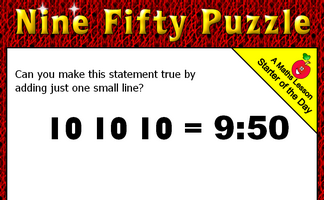
A little lateral thinking might help you solve this puzzle.
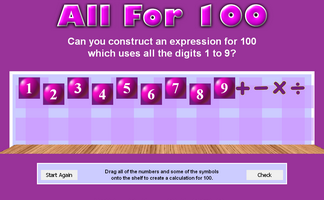
Can you write an expression for 100 which uses all the digits 1 to 9?
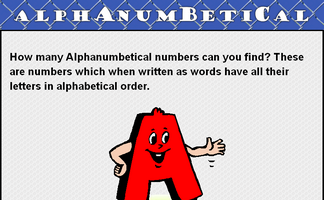
A challenge to find the number which when written as a word has all the letters in alphabetical order.
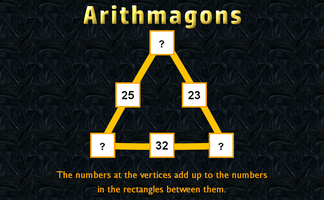
This lesson starter requires pupils to find the missing numbers in this partly completed arithmagon puzzle.
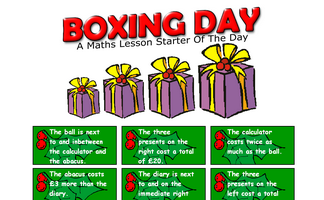
Work out the contents and the cost of the Christmas boxes from the given clues.
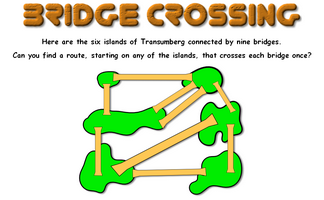
The classic puzzle of finding a route which crosses each bridge once.
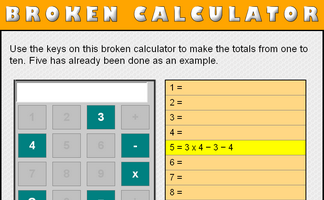
Some keys are missing from this calculator. Just how useful is it?
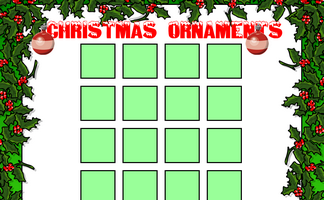
A Maths Starter activity requiring students to arrange Christmas ornaments in a square box.
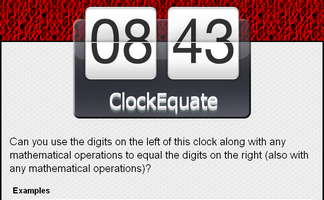
Can you use the digits on the left of this clock along with any mathematical operations to equal the digits on the right?
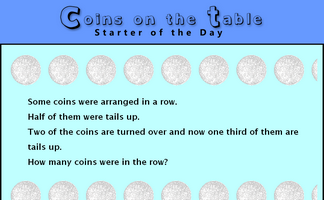
A puzzle about the number of coins on a table given information about fractions of them.
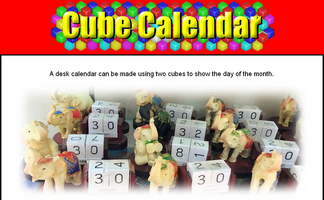
What numbers should be on each face of the two cubes to make this perpetual calendar?
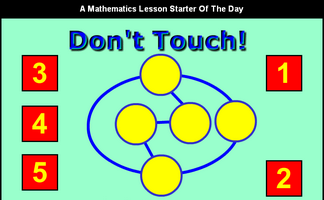
A number placing puzzle which, when solved, raises the notion of proof.
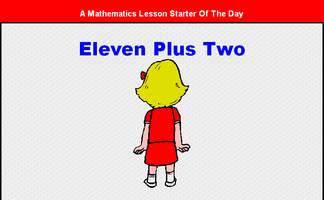
Rearrange the letters in the expression 'Eleven Plus Two' to make another expression with the same value.
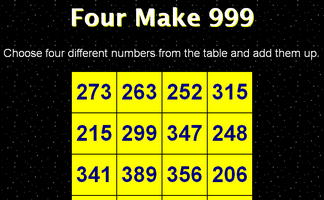
Figure out which numbers will complete the sentences in the frame correctly.
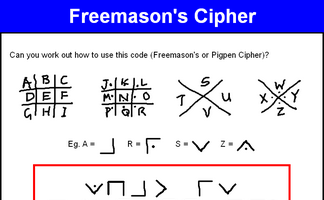
Find symmetric words in this ancient cipher.
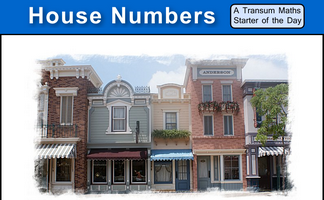
The numbers on five houses next to each other add up to 70. What are those five numbers?
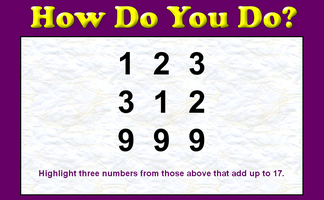
A little lateral thinking will help you solve this number puzzle.
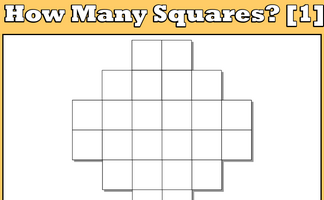
Work out how many squares are there altogether in the given pattern then tackle the chess board.
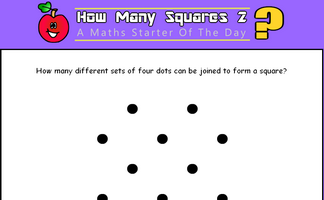
How many squares can be found by joining four dots on the grid?
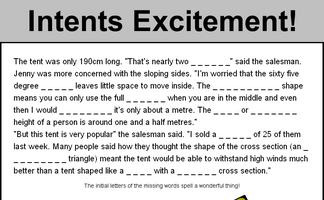
Work out the mathematical words missing from the story about buying a tent.
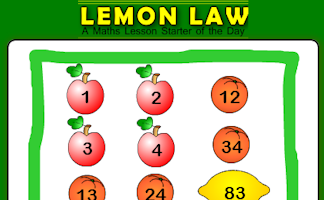
Change the numbers on the apples so that the number on the lemon is the given total.
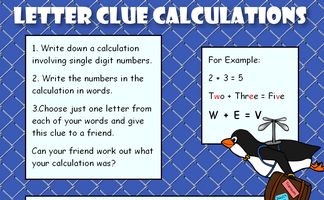
Work out what the calculations might be from the letter clues.
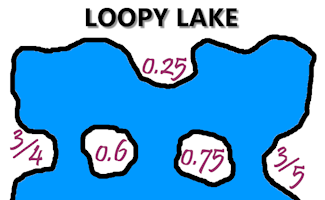
Match the fractions to their decimal equivalents and join them with lines that do not cross.
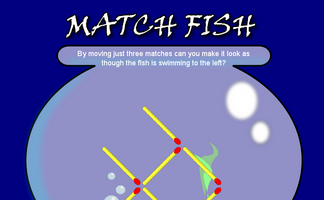
A classic matchstick puzzle designed to challenge your spacial awareness.
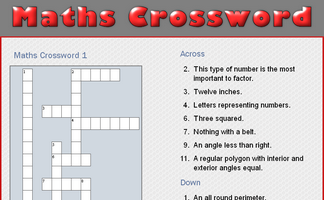
A small crossword puzzle containing mathematical words.

Find mathematical words which can be made by using the letters in the name of your school?
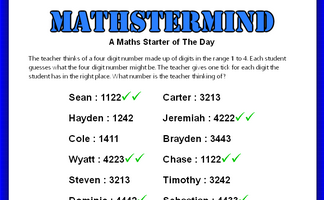
Guess the four digit number with help from the clues.
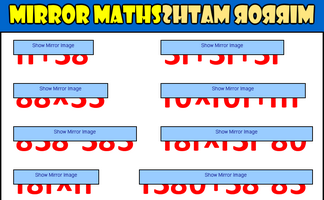
The bottom half of some symmetrical calculations are shown above. Can you work out the answers?
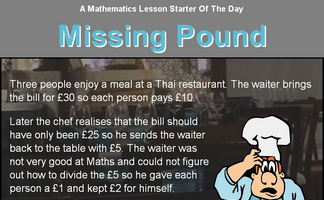
A puzzle about a restaurant bill. Exactly where did the missing pound go?
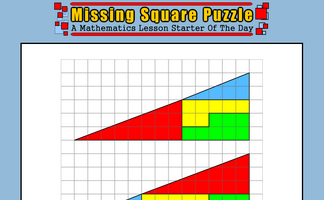
The missing square puzzle is an optical illusion used to help students reason about geometrical figures.

Work out which team played which from the information given.
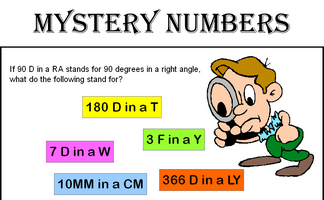
Can you recognise the mystery numbers from the clues?
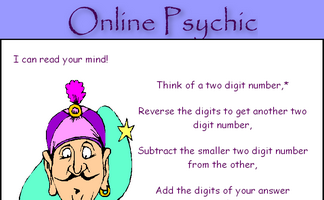
Work out why subtracting a two digit number from its reverse gives a multiple of nine.
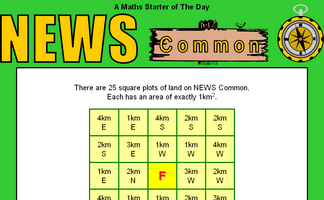
Follow the compass directions given in the squares to find where the route starts?

Arrange the digits one to nine to make a correct addition calculation.
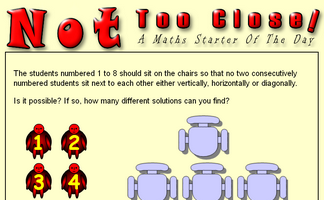
This activity requires eight students to sit non consecutively on a grid of chairs.
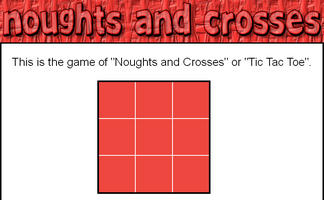
In how many different ways can the first X and O by placed on the grid?
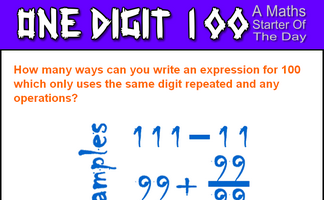
How many ways can you write an expression for 100 which only uses the same digit repeated and any operations?
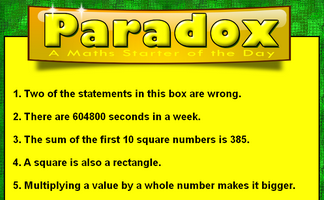
Can you solve this paradox by agreeing whether the statements are right or wrong?
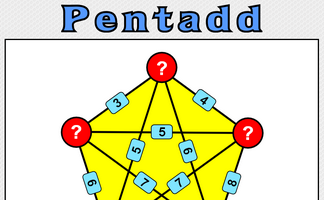
Five numbers are added together in pairs and the sums shown. What might the five numbers be?
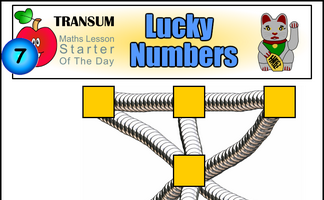
Arrange the numbers so that the totals of the three numbers along any pipe are the same.
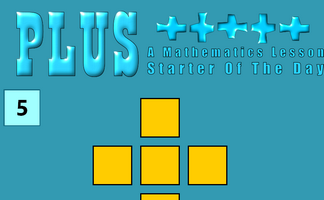
A number puzzle suitable for children with a wide range of abilities.
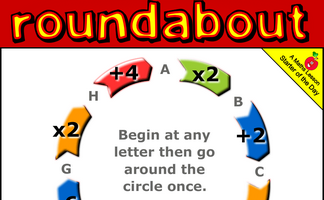
Go around the roundabout performing each of the operations. Which starting point gives the largest answer?
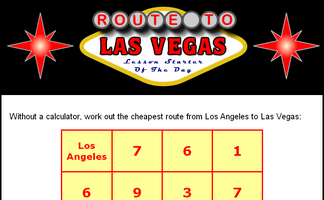
Work out the cheapest way from Los Angeles to Las Vegas by choosing the best route and adding up the given numbers.
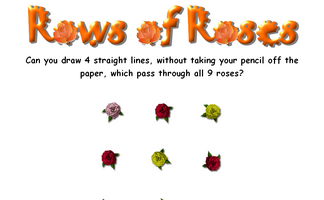
Can you draw 4 straight lines, without taking your pencil off the paper, which pass through all 9 roses?
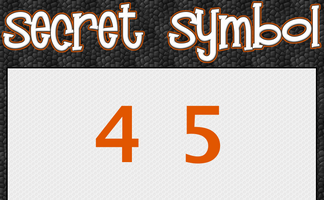
Place a symbol between the four and the five to get a number greater than four and less than five.

Can you find a 14 digit number containing two each of the digits one to seven which obeys the rules given?
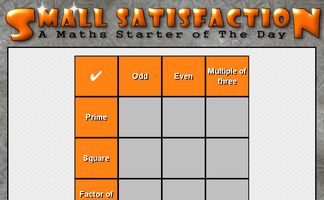
Arrange the digits one to nine in the grid so that they obey the row and column headings.
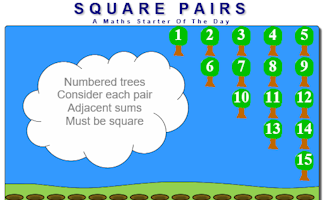
Arrange the numbered trees so that adjacent sums are square numbers.
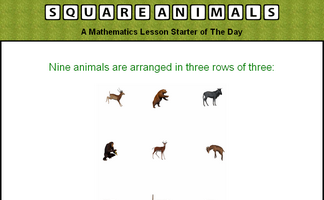
Separate three rows of three animals using three squares.
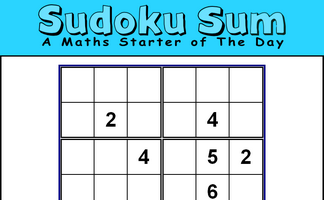
What is the sum of the numbers missing from the given Sudoku puzzle?
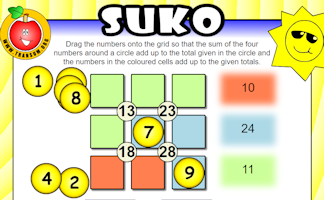
Interactive number-based logic puzzle similar to those featuring in The Times and Telegraph newspapers.
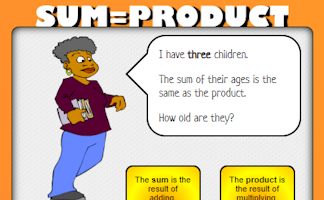
What are the numbers if their sum equals their product?
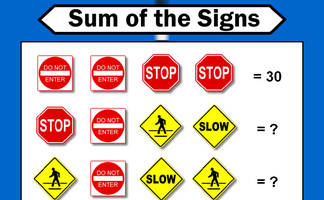
Each traffic sign stands for a number. Some of the sums of rows and columns are shown. What numbers might the signs stand for?
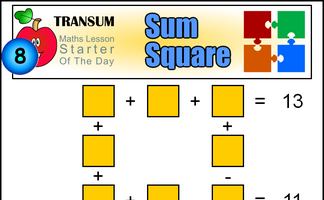
Arrange the numbers one to eight into the calculations to make the totals correct..
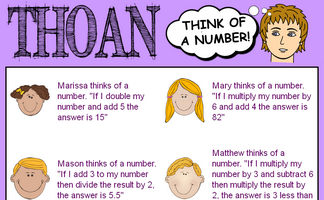
THOAN stands for 'Think of a number' and there are four randomly generated THOAN puzzles to solve.
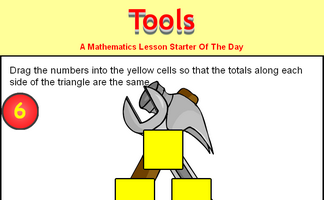
Place the numbers on the triangle so that the totals along each of the sides are equal.
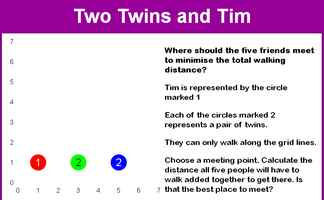
A tricky problem set on a coordinate grid.
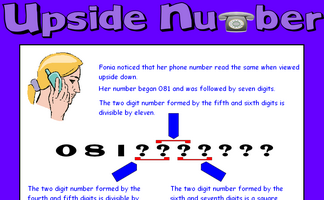
Work out the phone number from the clues given.
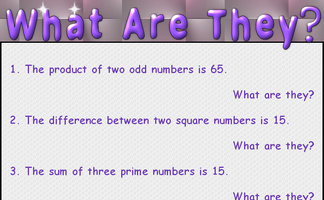
A starter about sums, products, differences, ratios, square and prime numbers.
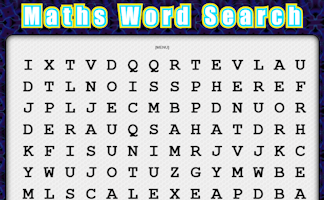
Create your own mathematical word search for the whole class to enjoy.
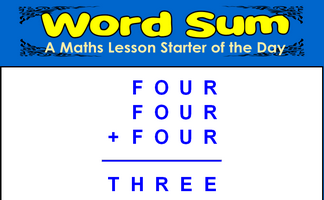
Each letter stands for a different digit. Can you make sense of this word sum?
Advanced Puzzles Starters
Exercises
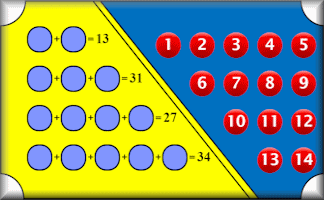
Addle
Arrange the numbers from 1 to 14 in the spaces to make the sums correct. How fast can you do it?
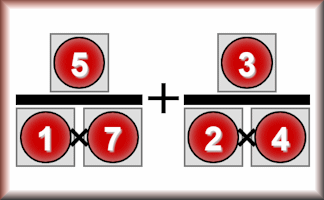
All For One
Drag the numbers one to nine onto the outlines of three fractions that combine to make one.
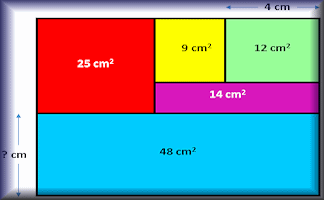
Area Maze
Use your knowledge of rectangle areas to calculate the missing measurement of these composite diagrams.
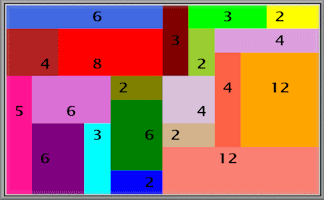
Area Wall Puzzles
Divide the grid into rectangular pieces so that the area of each piece is the same as the number it contains.
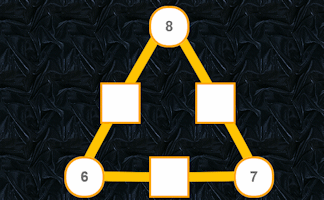
Arithmagons
Find the missing numbers in these triangular, self-checking puzzles and discover the wonders of these fascinating structures.
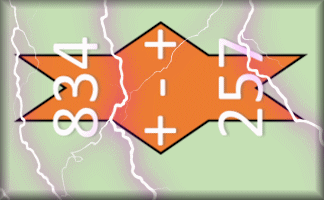
Awe-Sum
Arrange the given digits to make six 3-digit numbers that combine in an awesome way.
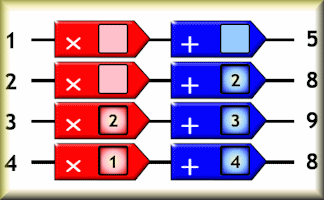
Brainbox
A puzzle requiring the arrangement of numbers on the function machines to link the given input numbers to the correct output.
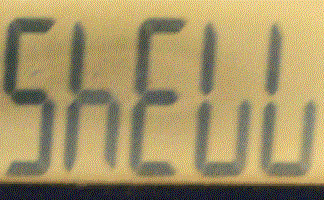
Calculator Words
Turn your calculator upside down to make words out of the answers to these questions.
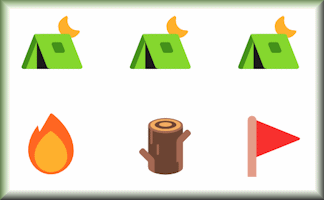
Camp Bosrow
Place the camping items into the plots on the camp site according to the clues given.
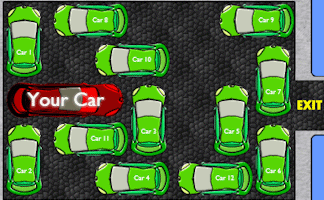
Car Park Puzzle
Can you get your car out of the very crowded car park by moving other cars forwards or backwards?
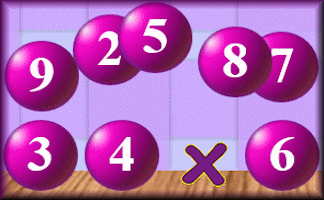
Centexpression
Arrange the numbers from 1 to 9 to make an expression with a value of 100.
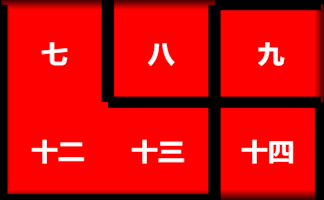
Chinese Numbers Jigsaw
An online interactive jigsaw puzzle of a grid of Chinese number symbols.
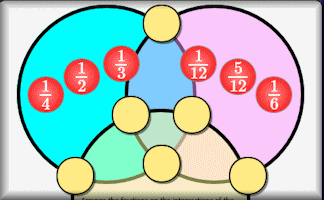
Circumfraction
Quite a challenging number placing puzzle involving fractions.

Clue Sudoku
A different way to complete a Sudoku puzzle with clues available at every stage.
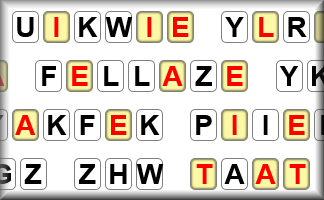
Code Cracker
Crack the code by replacing the encrypted letters in the given text. There are lots of hints provided about code breaking techniques.
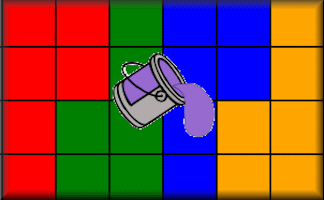
Congruent Parts
Use the colours to dissect the outlines into congruent parts.

Counting To and Fro
A puzzle about the counting method that goes back and forth.
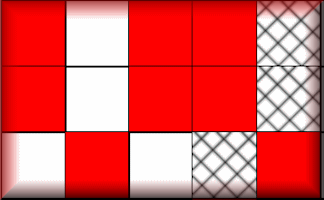
Cryptographic
Fill in the squares according to the clues given by the string of numbers for each row and column.
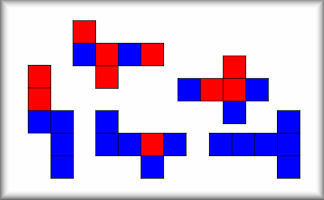
Cubical Net Challenge
Find all the ways of painting the faces of cubes using only two colours.
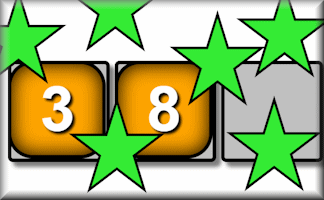
Delightfully Divisible
Arrange the digits one to nine to make a number which is divisible in the way described.

Digimoji
Crack the emoji code by testing equations and spotting patterns.
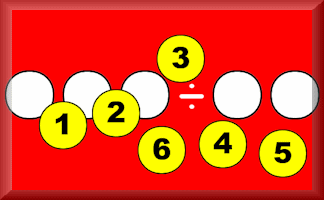
Digivide
Arrange the numbers from 1 to 6 in the spaces to make the division calculation correct.
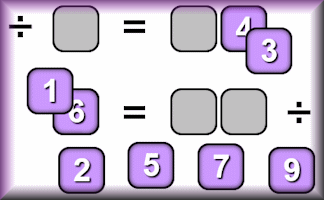
Divisive
Arrange the digits one to nine on the spaces provided to make two division calculations containing multiples of three.
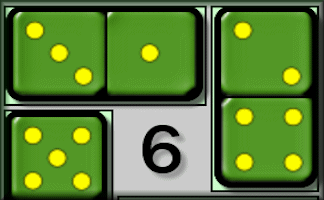
Dominoes Puzzle
Arrange the dominoes in seven squares. The number of dots along each side of the square must be equal to the number in the middle.

Double Treble
Arrange the digits to make three 3 digit numbers such that the second is double the first and the third is three times the first.
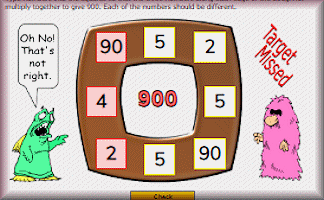
Doughnut Dissection
A puzzle to find four different ways of making 900 by multiplying together three different numbers.
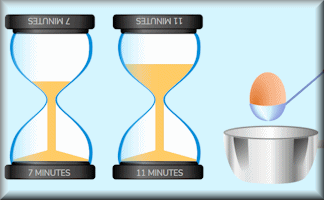
Egg Timers
The classic hourglass puzzle; Time the boiling of an egg using only the two egg timers provided.
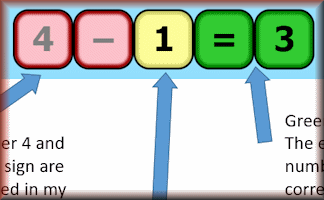
Equatero
Find the expression from a series of guesses and clues.
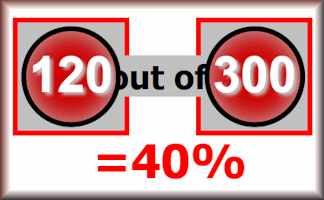
Express Percentage Puzzle
Drag the numbers into the percentage statements to make them true.
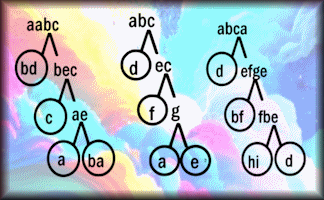
Factor Trees Challenge
Can you determine the unique digits that will complete these factor trees?
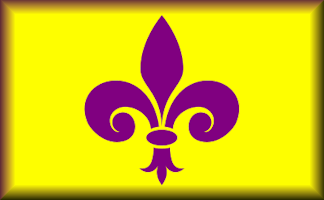
Fleur-De-Lis
Click on six fleur-de-lis to leave an even number in each row and column.
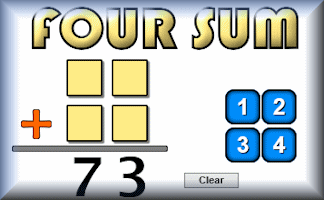
Four Sum
Arrange the given number tiles to make two 2 digit numbers that add up to the given total.
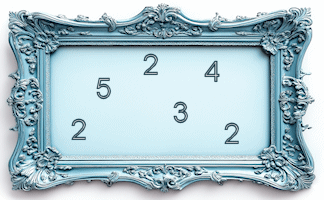
Framed Numbers
Figure out which numbers will complete the sentences in the frame correctly. A drag and drop activity.
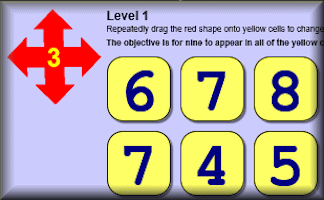
Frustration
A logic challenge requiring a strategy to update each of the numbers in a grid.
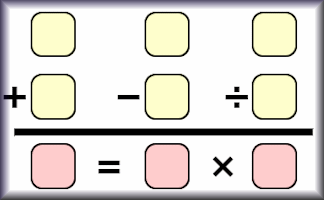
Go Figure
Arrange the digits one to nine to make the four calculations correct.
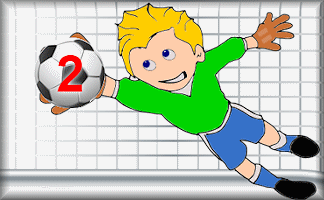
Goal Products
Arrange the numbered footballs on the goal posts to make three, 3-number products that are all the same.
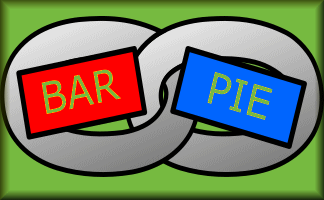
Groups of Four
A simplified, mathematical version of the challenge seen in the British TV programme Only Connect. Find the connections between the terms.
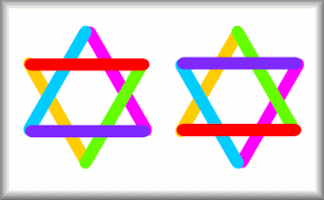
Hexagram Star
Arrange the twelve numbers on the hexagram so that the numbers in each line add up to the same total.
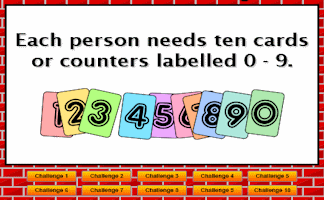
Hot Number Challenges
These hot numbers challenges are for students with no access to a computer and are presented in a form suitable to be projected onto a whiteboard in front of a class.
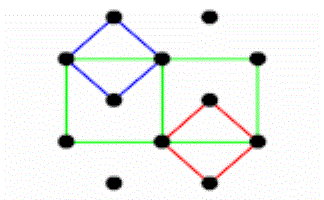
How Many Squares? 2
How many different sets of four dots can be joined to form a square?

Jugs
Can you make four litres if you only have seven and five litre jugs?

Largest Product
A drag and drop activity challenging you to arrange the digits to produce the largest possible product.
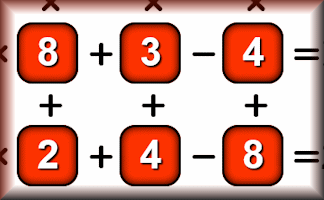
Latin Square Puzzles
Arrange the given digits to make a Latin square with the given row and column calculation results.

Lemon Law
Change the numbers on the apples so that the number on the lemon is the given total.
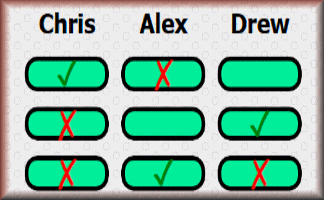
Logic Puzzle
Solve this deduction logic puzzle to find who, where and what.
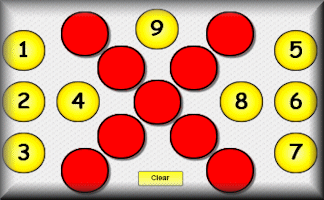
Ludicross
Arrange the given numbers on the cross so that the sum of the numbers in both diagonals is the same.

Magic Square
Each row, column and diagonal should produce the same sum.
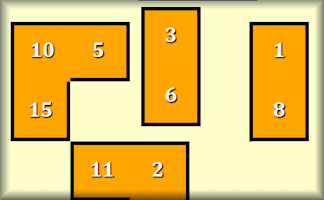
Magic Square Jigsaws
Interactive jigsaw puzzles of four by four magic squares.
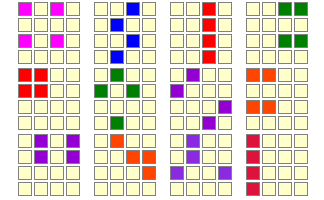
Magic Square Puzzle
Find all of the possible ways of making the magic total from the numbers in this four by four magic square.

Maths Crossword
An interactive mathematical crossword for you to do online. Find the missing words from the given clues.

Mine Find
Find where the mines are hidden without stepping on one.
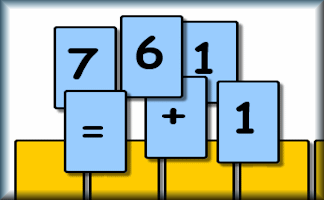
Mixpressions
Arrange the cards to create a valid mathematical statement.
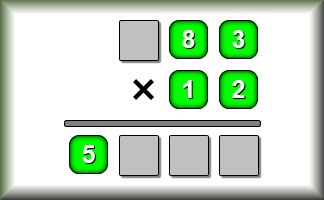
Multitude
Arrange the given digits to make three numbers such that the third is the product of the first and the second.
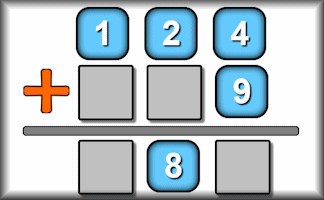
Nine Digits
Arrange the given digits to make three numbers such that two of them add up to the third.

Nine Nine Nine
Use the digits 1 to 9 to make three 3 digit numbers which add up to 999.
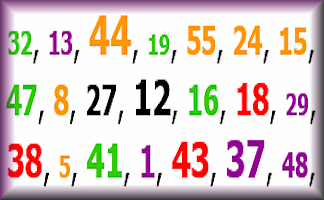
No Partner
Find which numbers in a given list do not combine with other numbers on the list to make a given sum.
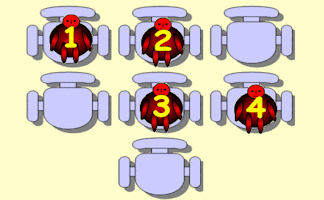
Not Too Close
The students numbered 1 to 8 should sit on the chairs so that no two consecutively numbered students sit next to each other.
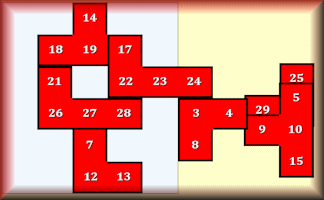
Number Jigsaws
Online, interactive jigsaw puzzles of grids of numbers.
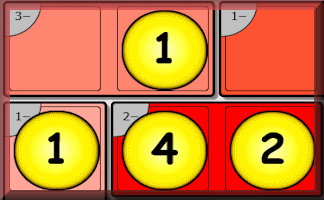
Numskull
Interactive, randomly-generated, number-based logic puzzle designed to develop numeracy skills.
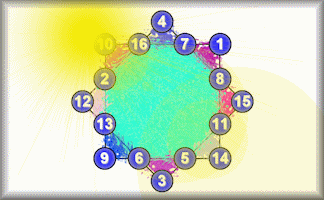
Octagram Star
Arrange the sixteen numbers on the octagram so that the numbers in each line add up to the same total.
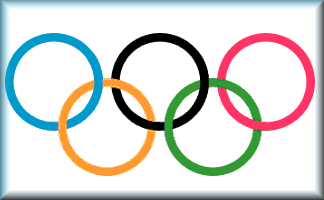
Olympic Rings
Place the digits one to nine in each of the regions created by the Olympic rings so that the sum of the numbers in each ring is the same.
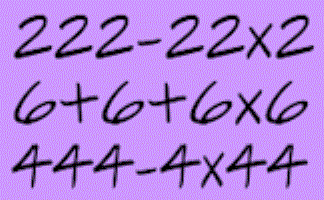
One Digit Only
Find expressions using only one digit which equal the given targets.
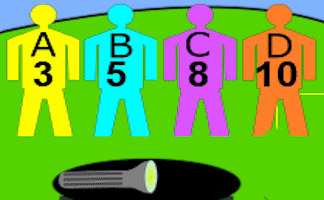
One Torch Tunnel
Solve the problem of getting four people through a tunnel with one torch in the minimum amount of time.

Online Psychic
Let the psychic read the cards and magically reveal the number you have secretly chosen. What is the mathematics that makes this trick work?
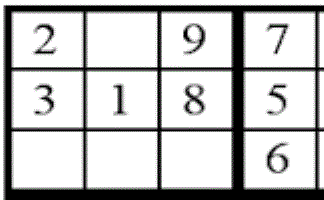
Online Sudoku
An online, interactive version of the popular number placing puzzle.
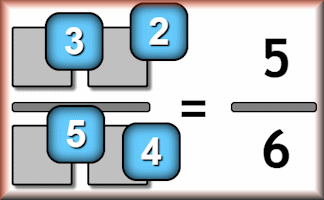
Overloaded Fraction
A set of ten puzzles requiring you to arrange the given digits to make an equivalent fraction.
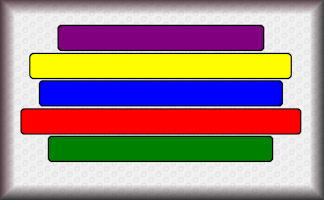
Pancake Day
Toss the pancakes until they are neatly stacked in order of size. Find how to do this using the smallest number of moves.

Partial Pyramids
Calculate the missing numbers in these partly completed pyramid puzzles.
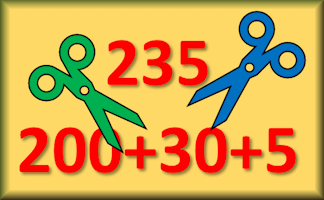
Partition Clues
Partition numbers in different ways according to the clues given. The higher levels are quite hard!
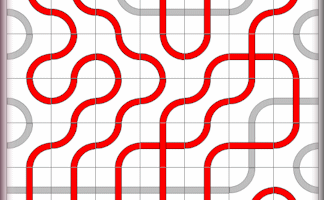
Path Puzzle
A great puzzle requiring you to use all of the cards to create a continuous red line from start to finish.
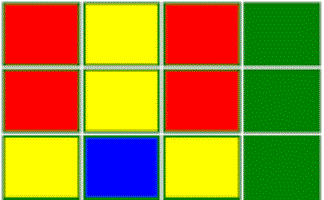
Pattern Clues
An interactive activity challenging you to reproduce a pattern of coloured squares according to given clues.

Pentadd Quiz
Find the five numbers which when added or multiplied together in pairs to produce the given sums or products.
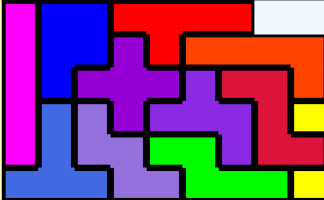
Pentominoes
Arrange the twelve pentominoes in the outline of a rectangle.
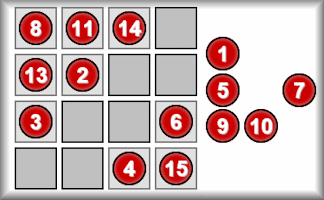
Perfect Magic Square
Arrange the sixteen numbers on the four by four grid so that groups of four numbers in a pattern add up to the same total.
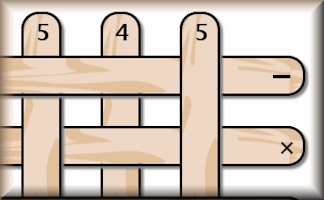
Pick Up Sticks
If you were to pick up the sticks from this pile so that you were always removing the top stick what calculation would you create?

Plane Numbers
Arrange numbers on the plane shaped grid to produce the given totals

Plus
A number arranging puzzle with seven levels of challenge.
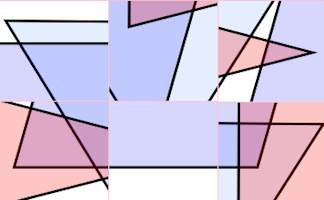
Polygon Pieces
Arrange the nine pieces of the puzzle on the grid to make different polygons.

Power Shift
Arrange the given numbers as bases and indices in the three-term sum to make the target total.
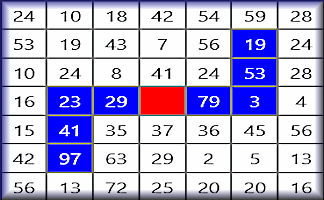
Prime Labyrinth
Find the path to the centre of the labyrinth by moving along the prime numbers.
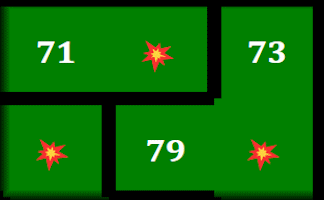
Prime Numbers Jigsaw
Interactive jigsaw puzzles of different types of grids containing prime numbers.
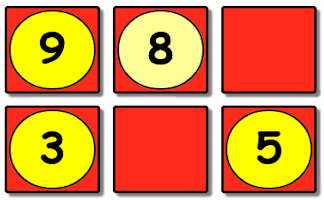
Prime Square
Drag the numbers into the red cells so that the sum of the three numbers in each row and each column is a prime number.
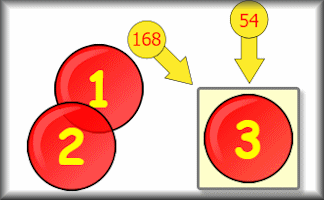
Product Square
Arrange the given numbers in a three by three grid to obtain the diagonal, row and column products.
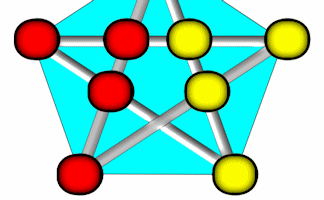
Pu Wiang
A fewest-moves, counter-swapping challenge invented in northern Thailand.
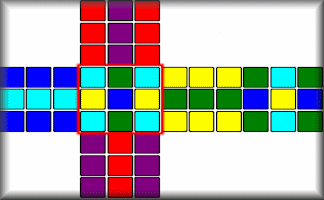
Puzzle Cube Net
A jumbled moving-block puzzle cube is shown as a net. Can you solve it?
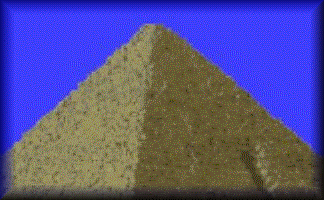
Pyramid Puzzle
Numbers in the bricks are found by adding the two bricks immediately below together. Can you achieve the given target?

Quad Areas
Calculate the areas of all the possible quadrilaterals that can be constructed by joining together dots on this grid.
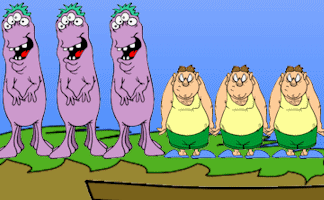
River Crossing
The traditional River Crossing challenge. Can you do it in the smallest number of moves?
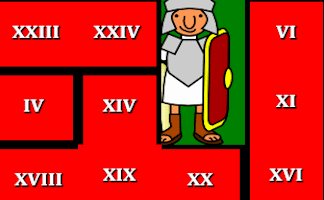
Roman Numerals Jigsaw
An online interactive jigsaw puzzle of a grid of Roman numerals.

Satisfaction
This is quite a challenging number grouping puzzle requiring a knowledge of prime, square and triangular numbers.

Satisfy
Place the nine numbers in the table so they obey the row and column headings about the properties of the numbers.
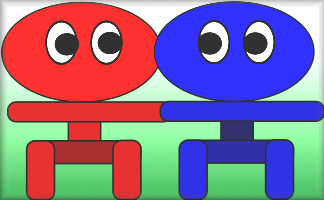
Scallywags and Scoundrels
Arrange the scallywags and scoundrels on the chairs so that the numbers of any two sitting next to each other add up to a prime number.

Scheduling Puzzle
Make a schedule for the 24-hour Darts Marathon which will take into account everyone's requests and keep everyone happy.
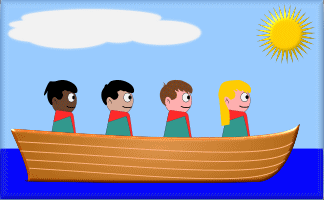
Scouts in Boats
Arrange a rota for the Scouts to travel in boats so that they are with different people each day.

Separated Twins
Can you find a 6 digit number containing two each of the digits one to three which obeys the rules given?
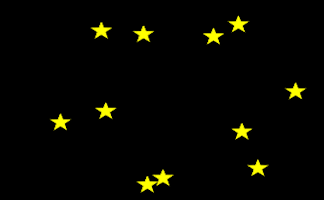
Shapes In The Stars
Join up the stars to find the hidden regular polygons.
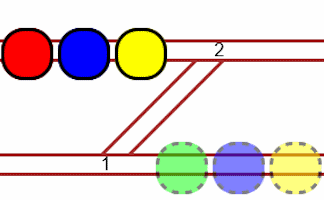
Shunting Puzzles
Move the trams to their indicated parking places in the shunting yard as quickly as possible.
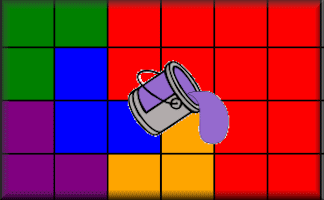
Similar Parts
Use the colours to dissect the outlines into similar parts.
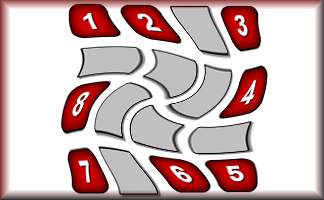
Spinsum
Arrange the numbers on the squares so that the totals along each line of three squares are equal.
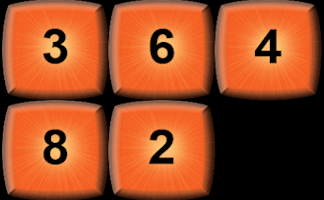
Squorder
The Transum version of the traditional sliding tile puzzle.
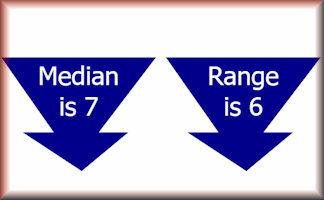
StatGrid Challenge
Arrange the numbers one to nine in a three by three grid to obtain the given means, medians and ranges.
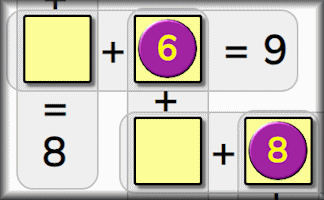
Stepwise Sums
Arrange the numbers one to nine on the stairs to obtain the given sums.
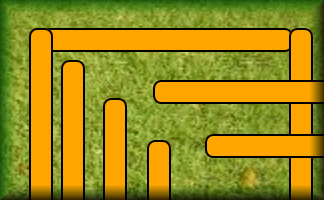
Stick Squares
Arrange the matches to form four squares instead of five.
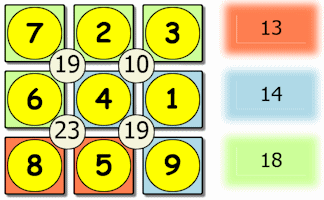
Suko Sujiko
Interactive number-based logic puzzles similar to those featuring in daily newspapers.
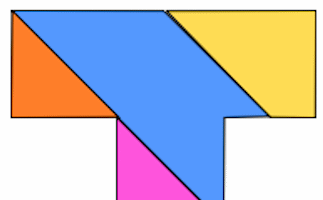
T Puzzle
Use the pieces of the T puzzle to fit into the outlines provided. A drag, rotate and drop interactive challenge.
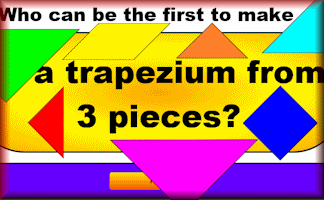
Tangram Challenge
A series of tangram challenges in increasing order of difficulty. This page is designed to be projected onto a screen for a whole class to see.
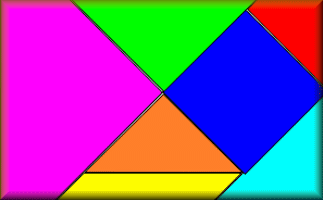
Tangram Table
Use the pieces of the tangram puzzle to make the basic shapes then complete the table showing which shapes are possible.
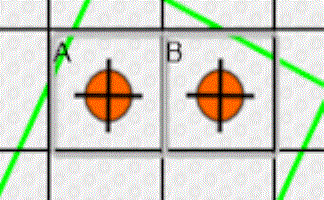
Tantrum
A game, a puzzle and a challenge involving counters being placed at the corners of a square on a grid.
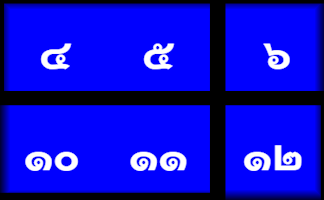
Thai Numbers Jigsaw
An online interactive jigsaw puzzle of a grid of Thai number symbols.
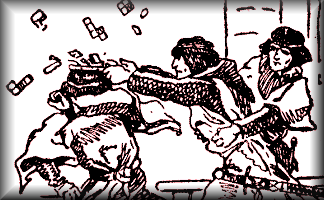
The Broken Chessboard Puzzle
The chessboard has been broken into 13 pieces. Can you put it back together?

The Miller's Puzzle
This is an interactive version of the puzzle described by Henry Ernest Dudeney in The Canterbury Puzzles
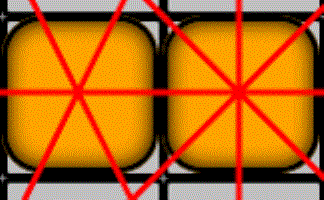
Thrice
A challenge to place all nine counters on the grid in such a way that they form exactly 10 straight lines, with each line containing three counters.

Tools
In how many different ways can the numbers be arranged to give the same totals?
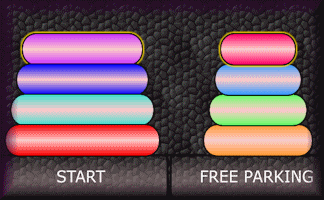
Tower of Hanoi
Move the pieces of the tower from one place to another in the minimum number of moves.
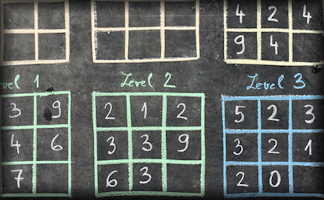
Trafalgar Square
Solve the number puzzles drawn on the pavement of Trafalgar Square in London.
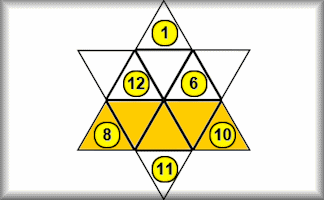
Triangled Hexagram
Arrange the twelve numbers in the triangles on the hexagram so that the numbers in each line of five triangles add up to the same total.
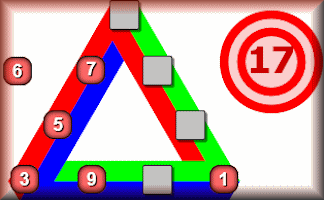
Triside Totals
Arrange the digits 1 to 9 on the triangle so that the sum of the numbers along each side is equal to the given total.
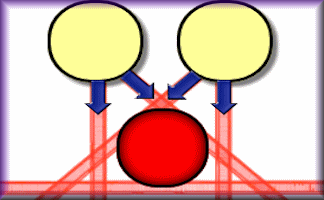
Truculent
Can you arrange the seven counters on the grid despite their truculent behaviour?
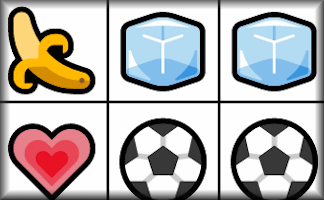
Unbeknownst
Some picture grid puzzles which can be solved by using simultaneous equations.

Unmagic Square
Like the magic square but all of the totals should be different.
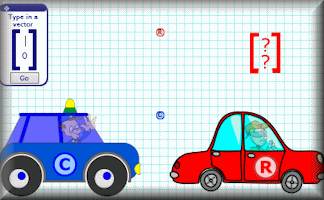
Vector Cops
Help the cops catch the robbers by finding the vectors that will end the chase.
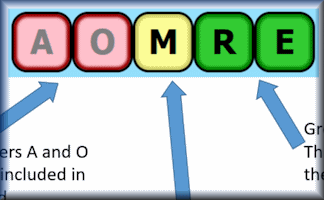
Vocabero
Find the mathematical word from a series of guesses and clues.

Vowelless
Vowels have been taken out of mathematical words. Can you recognise them?
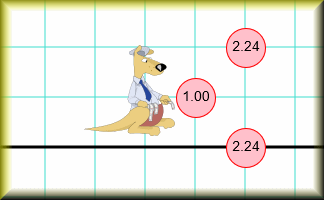
Where's Wallaby?
Find the hidden wallaby using the clues revealed at the chosen coordinates.
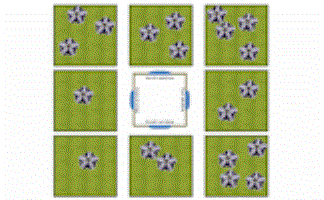
Window View
Drag the 20 flowers into the gardens so that 9 flowers are visible from each window of the house.
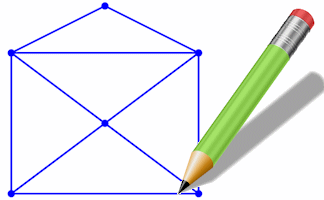
Without Lifting The Pencil
Can you draw these diagrams without lifting your pencil from the paper? This is an interactive version of the traditional puzzle.
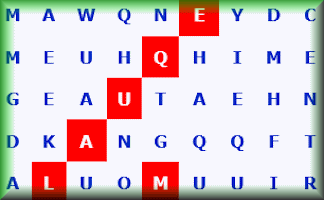
Word Search
Find the mathematical words in the grid of letters.
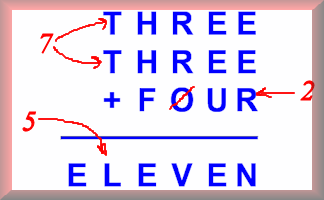
Word Sums Guide
A step by step guide showing how to solve a Word Sum where each letter stands for a different digit.

Xmas Ornaments
A hands on activity requiring students to arrange Christmas ornaments in a square box.

Yohaku Puzzles
Fill in the blank spaces so that the cells give the sum or the product shown in each row and column.
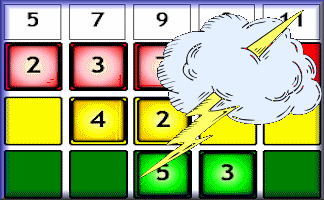
Zygo
Interactive, randomly-generated, number-based logic puzzle designed to develop numeracy skills.
Other activities for this topic | | |
Complete Index of Starters



































































































































































































